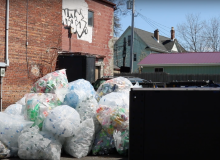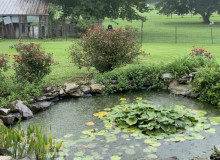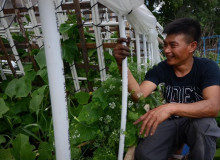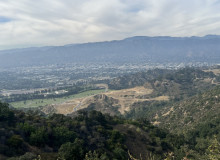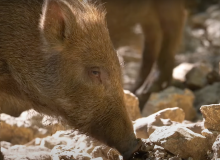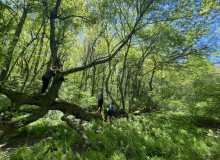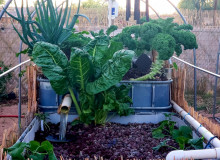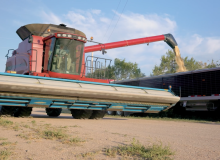Latest
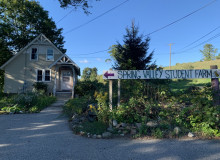
The sign outside Spring Valley Student Farm, a collaborative project with UConn’s Residential Life, Dining Services and EcoHouse Learning Community in Mansfield, Conn., on Sept. 23, 2022. Jessica Larkin-Wells, the farm manager for Spring Valley Student Farm, said the farm focuses heavily on education, including how to build resilient soil. (Madeline Papcun/University of Connecticut)
University of Connecticut
Farmers around Mansfield, Connecticut, and around the world, have been facing intertwined production and economic challenges due to variation in precipitation levels. So how are they adapting?
Planet Forward Correspondent | SUNY Environmental Science and Forestry
In this video, learn how the New York State Bottle Bill financially incentives collectors to recycle wasted cans and bottles as well as gives less fortunate people a reliable and dignified way to earn a living.
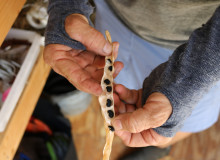
Robin Clemmons rips apart a pod of black beans, demonstrating that not many people may realize where crops, like black beans, actually come from. These bean pods need to be dried before volunteers can shell them by hand — in a days work, it's tricky to fill a plastic shopping bag. (Carter Weinhofer/Eckerd College)
Planet Forward Sr. Correspondent | Eckerd College
Food security is a growing issue, but small-scale agriculture can be a catalyst to aid in large-scale food movements.
University of Georgia
Napping in Grandmother's garden. Connecting to nature. Join me.
Planet Forward Correspondent | Northwestern University
Global Garden Refugee Training Farm in Chicago makes space for refugee farmers to grow traditional fruits and vegetables, while also integrating local cultivars. One farmer shares what he grows in his farm plot.
University of Georgia
What lies behind the Hollywood sign? A different kind of glamorous. Join me to discover.
Planet Forward Correspondent | Texas Tech University
Controlling invasive species can be costly and time-consuming. Watch this video to learn how including them on your plate could be a viable way to manage and even reduce populations.
University of Georgia
Stuck on a mountain. During the pandemic. Don't worry, it all turned out ok. It's a good story too. Read on.
Planet Forward Correspondent | University of Arizona
Charles Collins is a backyard gardener on a mission to change the way that the world grows food. In this audio story, Charles discusses his primary method: aquaponics.
Planet Forward Correspondent | Colorado State University, Center for Science Communication
Colorado farmer, Roy Pfaltzgraff, reflects on the challenges he faces as a farmer, how he has adapted, and the importance of consumers understanding food production.

